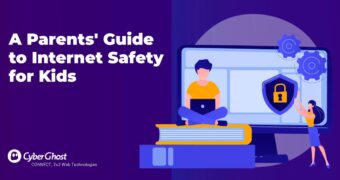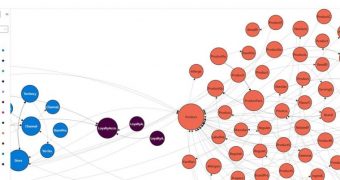As a resource, the internet is a wonderful place for children to learn, explore ideas,…
Kids and Tech

Technology is integral to a child’s life. They will see it everywhere from birth and will inevitably grow up using it. It can be extremely educational, help build skills, and be a creative outlet. It can also be dangerous — predators, hackers, and other threats use technology to hurt others. We’ll teach you how to protect your children from the wide variety of threats out there, including the over-usage of technology itself. By knowing the risks and having the tools available, you can make technology work for you and your youngsters.
Kids and Tech
Fast Facts
- 88% of children use the TV
- 67% of children use a tablet
- 60% of children use a smartphone
- 44% of children use a laptop or gaming device
Technology is here to stay. Our children will grow with it and want to utilize it throughout their lives. While not all parents may agree with kids’ use of technology, cultivating skills and literacy with tech and the internet is increasingly important for school and work later in life. Here are some ideas to incorporate tech literacy at every age.
Ages 2 – 5
While technology typically isn’t at the center of every preschooler’s life, the reality of parenting is that kids do get more screentime than most of us would like. For young kids, it’s good to model behaviors that normalize doing non-tech things. Be intentional about putting your phone down for conversations and playtime, and resist the urge to take pictures to document each day of life. While there’s nothing wrong with photos, it’s important to show kids how life is when our phones are put away.
Ages 6 – 9
Smartphone, computer, and tablet games are likely already a part of your child’s life. Now is an important time to set boundaries for screen time, as well as encourage healthy “offline” activities. Exercise and good rest are key to growing bodies, and blue light can interfere with sleeping patterns. Encourage kids to balance their tech time going outdoors, moving their bodies, and socializing in real life. Screen time modes can be used on Apple and Android, but it’s also very important to have a sit-down conversation about these boundaries.
Ages 9 – 11
As children begin using the internet even more at school for research and reports, now is a great time to talk about information bias, journalism, and fake news. Some great resources for learning about bias on the internet include:
- BBC iReporter tool to understand why bias exists in the news today
- Fake or Real? headline game to learn how easy it is for fake information to seem real
- Harmony Square game to better understand how fake news spreads
Ages 12 and beyond
By this point, children are highly internet and technology literate. This is an important time to speak to them about being a good digital citizen, avoiding cyberbullying (we’ll talk more about this later), and thinking about their long-term online presence. Remind them that what you post on the internet follows you forever, so making good choices today can avoid embarrassing and harmful issues later in life.
At this age, many kids are also learning about potential future careers in the internet and technology industries. If your teen shows a propensity toward all things digital, exploring those career paths can help them feel more confident about the future. Here are some great resources to learn about digital careers:
- 10 Free Coding Programs for Kids
- Teaching Your Kids About Digital Marketing
- Get Kids to Create Media, Not Just Consume It
Risks of the Internet
The internet is a way of life for most of us. That said, it’s important to be aware of the damaging risks of the internet and to have conversations about these risks with your kids.
Explicit content. The list includes content containing swearing, depictions of violence against animals, gambling, unmoderated chat rooms, sites that encourage unlawful, cruel, or harmful behavior (think racism, suicide, eating disorders, terrorism), pornography, and sexism.
Some platforms have age ratings you can check for their content. Youtube rates music videos in the Partner Rating. Like in film, the major streaming services have ratings on their shows. Age ratings on apps can be helpful, but they don’t necessarily consider all the risks (such as chatting with strangers). Online games use a Pegi rating (PEGI 3 – PEGI 18) to indicate appropriate age ranges. All social media, by US law, is aged 13 and up.
Interacting with strangers. There’s a high possibility of children online speaking to strangers. Research shows that 40% of children aged 9 – 12 have talked to strangers online. Those numbers only get more alarming the more they’re broken down. Of those, 53% gave their phone number to the stranger, 30% texted strangers from their personal devices, and 15% attempted to meet the stranger. The best way to prevent this is through education.
Children don’t understand that these strangers could simply be lying. Teach them about the dangers, so they know. It helps to ask many questions and get involved in their online games. By investing time to educate your kids, you can protect them better.
The dark web. Another potential risk is the dark web, an entirely anonymous place on the internet, only accessible through a specific software called TOR. While the dark web isn’t illegal, its anonymity makes any illicit behavior hard to track and laws challenging to enforce.
To protect from this, there are excellent privacy filters you can set up across all devices. A VPN, or a virtual private network, can provide a great additional security measure. One of the best ways to help is to continually build your child’s critical thinking. If they can figure out a dubious site or detail, it can really help them steer clear of these harmful sites. Parental control apps are the best way to manage your child’s online presence. They filter content, block specific apps and sites, set screen time limits, monitor calls, texts, social media, and more. Most of these cost an annual subscription anywhere from $10 – $100/year.
Hacks and data leaks. Hackers may try to gain access to accounts, as well as embarrassing or harmful information about you, then extort you with that information. Children online are susceptible to this because they may not understand the importance of a strong internet password or two-step verification. They may not know how others can turn their private photos against them. As with the rest of these threats, education is critical. Communicate so your child knows what can go wrong.
Cybersecurity 101
As discussed, hacking and data leaks are an important risk to be aware of on the internet. Just like most risks, it’s important to talk to your children early and often about data security and avoiding hackers. Set ground rules with your kids to keep them safe, but be sure to keep an open-door policy to encourage them to come to you if they fear they’ve downloaded a virus. Ground rules can include:
- I won’t download anything onto the computer without an adult present. This is often when “exploit kits” from harmful websites are downloaded and viruses install themselves. Other viruses to keep an eye out for are worms, which spread on their own accord by multiplying themselves. Trojans masquerade as real programs, such as anti-virus programs, so it takes over when a user boots it up. Ransomware is when a program holds your PC hostage unless you pay (now in cryptocurrency) to get it back. Adware is invasive ads designed to take you to fake sites.
- I won’t click on links that are sent to me by people I do not know. Clicking on web or email links can lead to inappropriate or harmful content.
- I will only use the computer in a shared space, like the living room or kitchen. This can help ensure that an adult can monitor the child’s activity and act quickly if a cybersecurity threat happens.
A strong cybersecurity system is an excellent defense against these threats. Anti-virus programs stop a lot of these from running. They can include anti-phishing and prevent you from opening malicious links. You can get programs with web camera protection so a hacker can’t take it over and spy on the user. Content blockers are also helpful.
Another major aid in the fight against viruses is a VPN or virtual private network. It can come with antivirus and malware protection, making it difficult to hack if you’re on wifi with a weak password, such as something public.
Password protection is another great way to stay sharp on the internet. Consider different passwords for everything. If you have only one, and someone gets it, they have all your passwords. You can also use a password manager, which remembers your passwords for you and stores them for future use. Great options include LastPass, Dashlane, KeePass, or 1Password.
IoT Devices
Access to the internet isn’t limited to just phones, tablets, and computers. Remember the many devices that are in your home that can become a cybersecurity threat. Be sure that these are password-protected and that you know how the data collected is being used.
IoT Toys
IoT (Internet of Things) are the everyday gadgets that connect to the internet outside our mobile devices — fitness Trackers, digital watches, and any “smart” technology. If it connects to the internet or can be controlled via Bluetooth or a phone app, it’s an IoT.
IoTs are a growing phenomenon, and it’s uncertain how much data they collect from children. It’s also possible for children to get around parental controls through these devices, allowing them to see explicit content or spend money. They’re vulnerable to hacking.
Like everything else, setting up parental controls and privacy is the first step towards keeping your IoT and children safe. Keep an eye on the data saved on your devices. Talk to your children about them, so they understand.
Smart Security Cameras
Smart cameras are security cameras and baby monitors you would use to see the activity inside your home. They connect to the internet, so you can watch via a live feed and even possibly record the event. If someone hacks their way into the camera, they can see what you’re seeing.
If the camera comes with a default password, change it. A good password connects three random words. Regularly update the camera. Updates usually contain many security enhancements to products. If you don’t need to view security footage, disable it remotely. Generally, teaching your children to cover their cameras, such as webcams, is good practice.
Cyberbullying
As we discussed earlier, cyberbullying and your child’s digital citizenship are critical for a healthy relationship with peers and potentially their future success. Easy to spread and very difficult to stop, cyberbullying is defined as sending or posting harmful, false, malicious, and damaging content about someone else. It can also be intentionally sharing embarrassing or private personal information about someone intending to humiliate. 37% of teenagers claim to be bullied online, with 30% claiming it happened more than once. Of those surveyed, girls tend to be more likely to be perpetrators and victims of cyberbullying.
Currently, most states in the US have both cyberbullying laws and policies to back them up. However, if you live in a state where only laws exist, things can become a little more tricky. Be sure to review your state’s law and policy yourself and with your child. While your child hopefully will never need to face the law, it can help them better understand the seriousness of being on both the giving and receiving sides of cyberbullying.
Original article by Teresa Siqueira: Children’s Online Safety >


